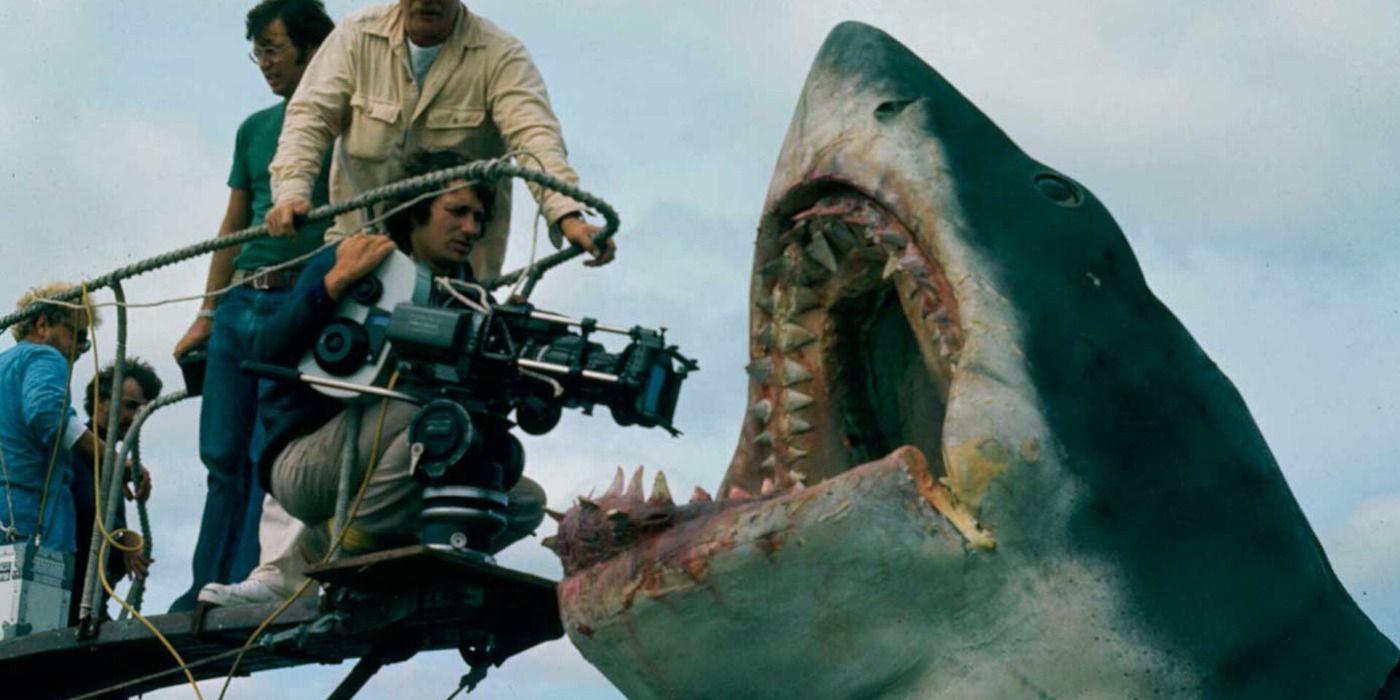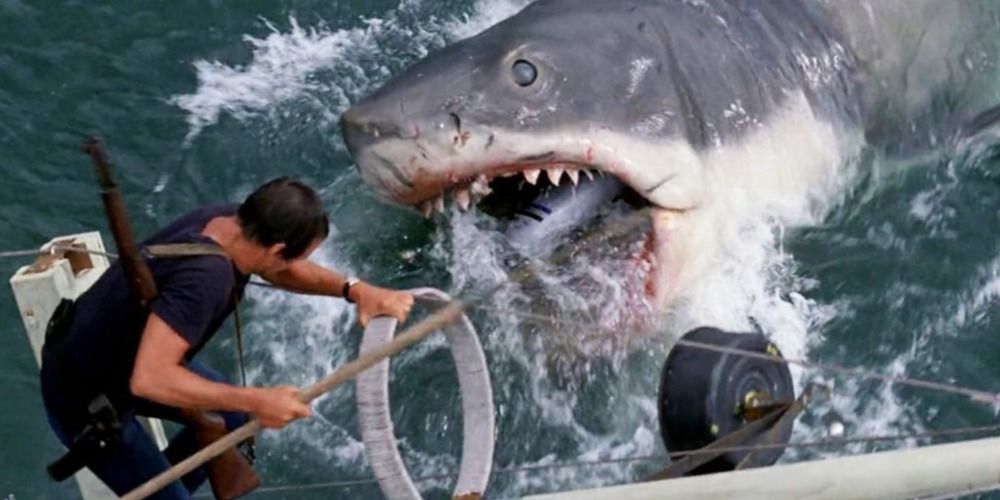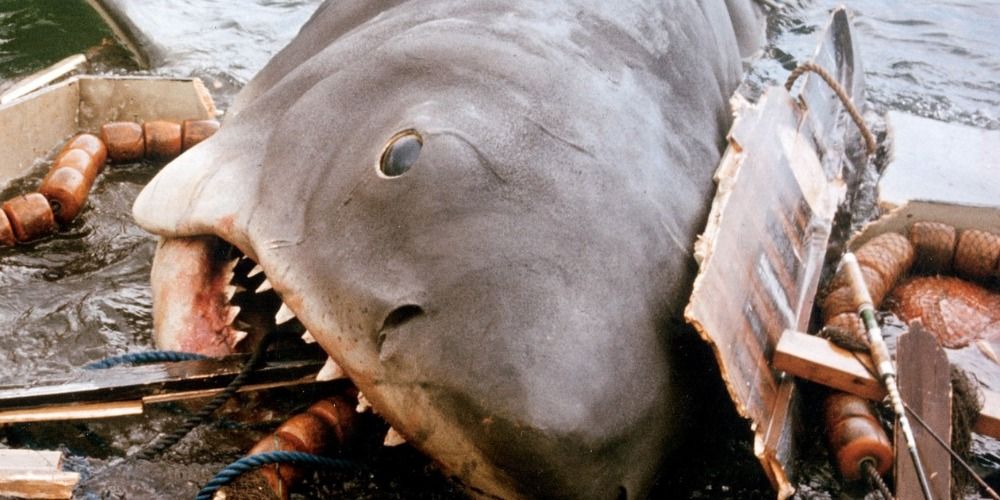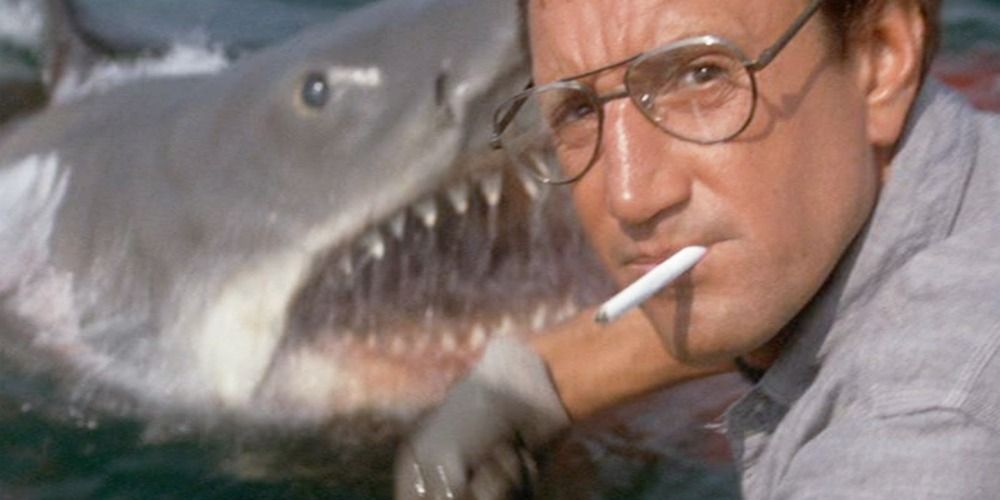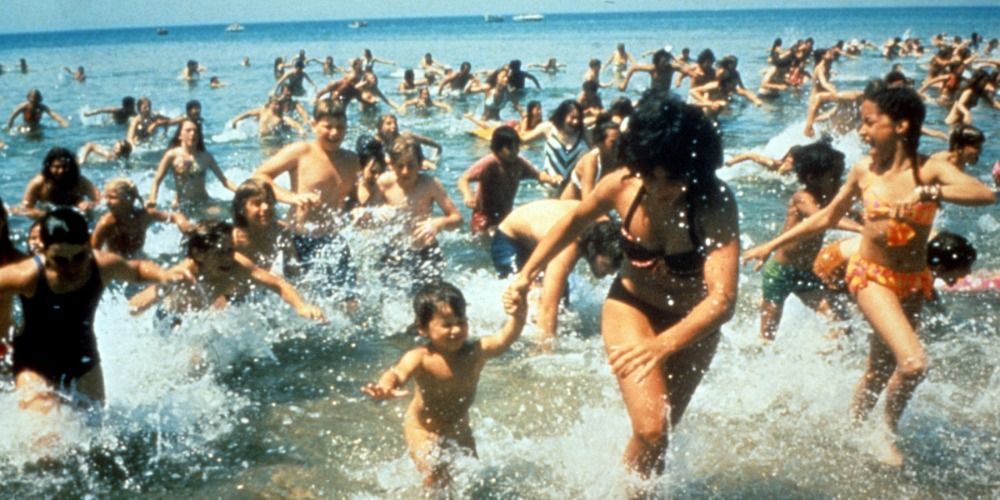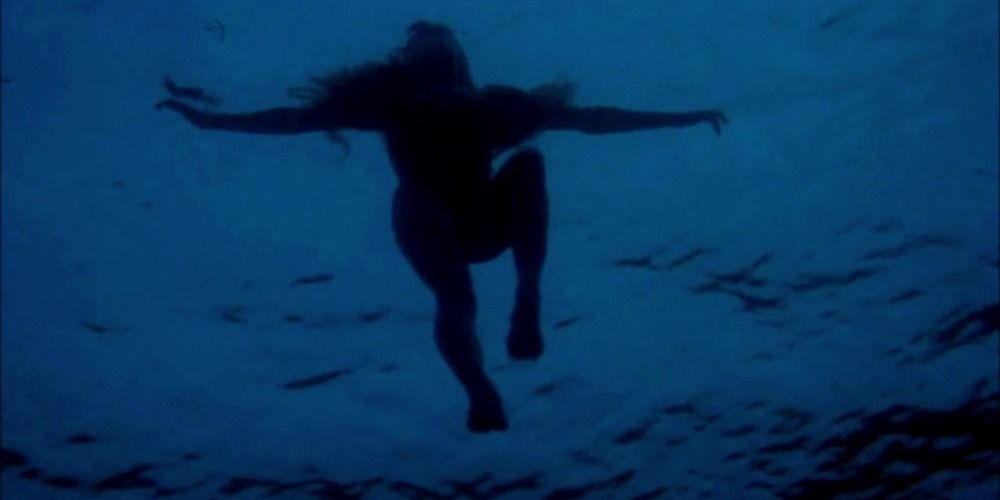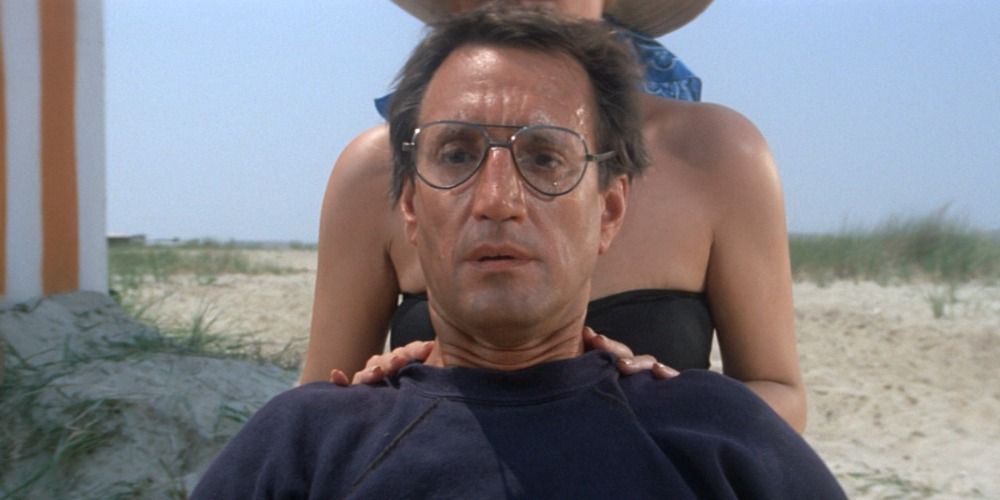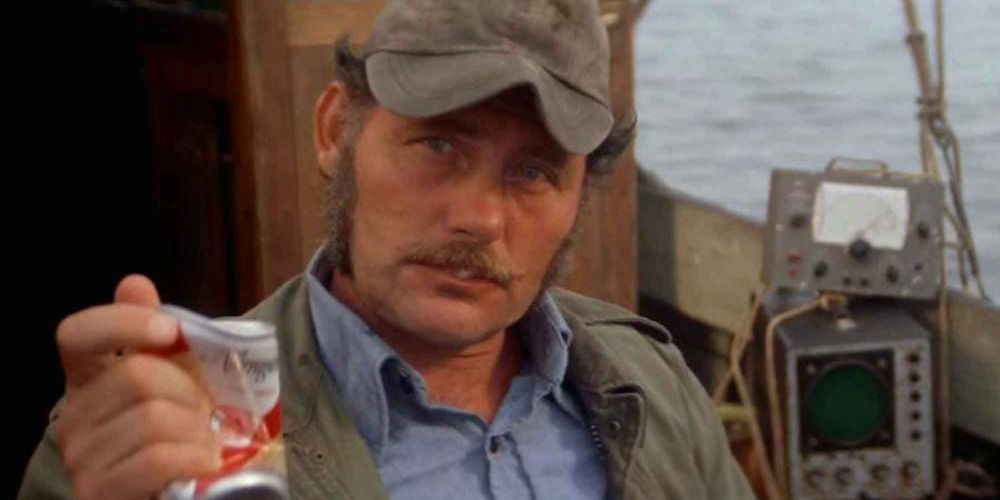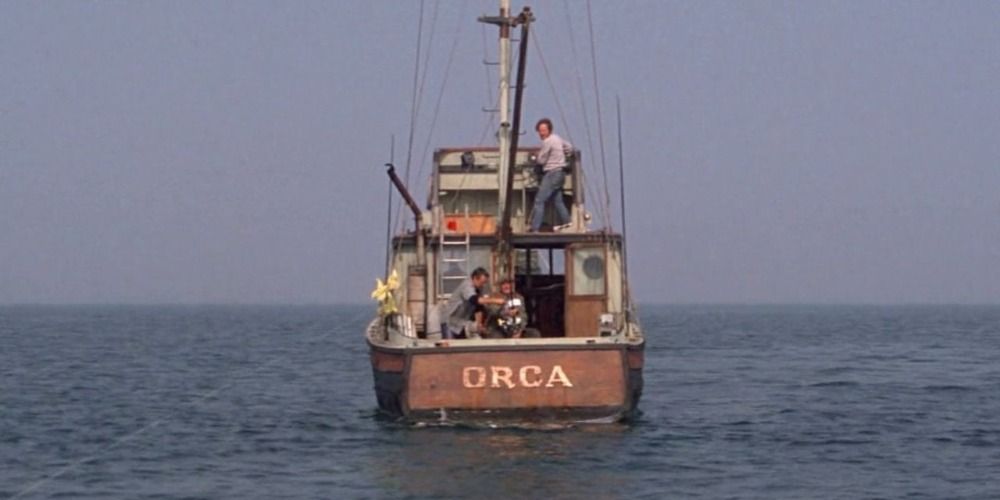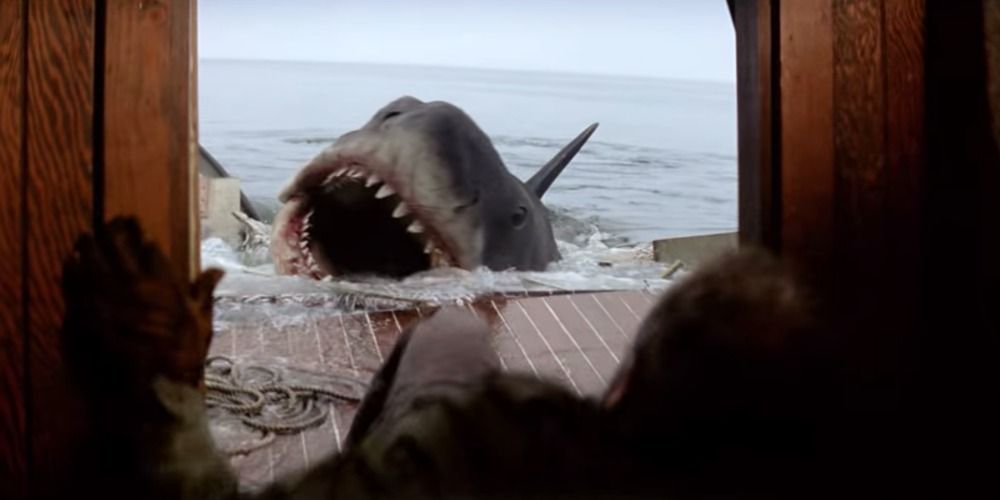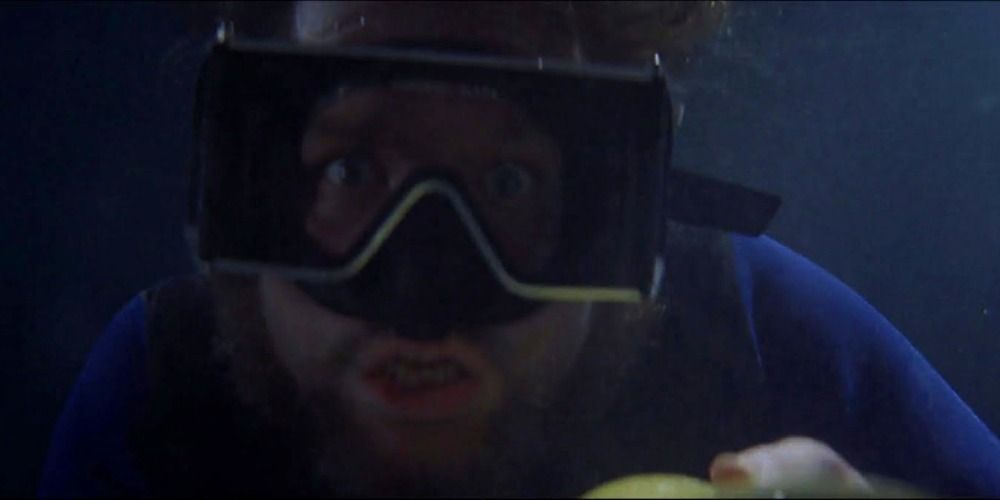"Just when you thought it was safe to go back in the water." While there was no real threat from sharks on the set of Jaws, the film's infamously long production was plagued with mechanical and human-led issues. Director Steven Spielberg, still a novice at the time, strived for perfection with his horror feature, and he made a lot of people angry along the way.
Ultimately, Jaws did not disappoint in theatres, and it remains the best monster movie set at sea. Since it's release in 1975, cast and crew members have opened up more and more about their experiences making the film. From perpetually drunk actors to filming with an unfinished script, life on the set of Jaws was strange indeed.
Producers Wanted To Train A Great White Shark For The Movie
That's right: the producers of Jaws thought it would be possible to train a live great white shark for the film. Not only is it impossible to hold a great white in captivity, but marine biologists have also proven the idea of training such a fish is laughable.
The reason why great whites can't be contained like other water creatures is because of how the shark has evolved. The great white shark is used to moving fast and swimming great distances. When held in a tank, the shark tends to injure itself and eventually die.
Instead, Three Mechanical Sharks Were Made For The Film
Fortunately, no real great whites or people were harmed while making Jaws. Instead, Spielberg worked with designers to develop three massive, mechanical sharks to play the movie's eponymous monster.
One of the beasts was designed for sledding through the water, another for full-body shots, and a third cut in half for horizontal camera shots. Powered by pneumatics, the sharks were nicknamed Bruce in honor of Spielberg's lawyer, Bruce Ramer.
Steven Spielberg Nicknamed The Shark The Great White Turd
As production began, the sharks earned another nickname from Spielberg: The Great White Turd. The reason? The robotic killing machines didn't fare well in the open water.
Spielberg insisted upon filming Jaws in the ocean instead of in a studio, and most of the movie was shot off the coast of Martha's Vineyard. The sharks had only been tested in freshwater, and once they were dumped into the Atlantic, they malfunctioned left and right – making for a very stressful filming experience.
The Script Was Unfinished When Filming Began
The author of the book that Jaws is based on, Peter Benchley, was asked to write the screenplay for the film. Producers found his characters too unlikeable, and the script he wrote went through various revisions until another writer, Carl Gottlieb, eventually rewrote most of the screenplay.
Gottlieb's nine-week reshaping overlapped with the movie's principal photography, meaning shooting began without a finished script. Instead, Gottlieb usually finished the script for a scene the night before it was filmed.
A Real Arm Was Used For The Scene Where Chrissie's Body Is Discovered
The iconic opening scene of Jaws involves a bikini-clad young woman named Chrissie Watkins going on a midnight swim to remember. The morning after, what's left of Chrissie after her run-in with the titular shark washes up on the shore.
Originally, Spielberg used a prop arm popping out of the sand to imply the horrible fate of the girl. It looked too fake for his taste, so he refilmed the scene with a real arm, which was attached to a female crew member buried in the sand underneath her exposed appendage.
Author Peter Benchley Was Kicked Off The Set
Tensions were already high between author Peter Benchley and the Jaws production team after they sidestepped Benchley's script. Benchley still spent a lot of time on set, even acting in the film as an interviewer.
When Spielberg started filming the final scene for Jaws, a major blow-out ensued between the director and Benchley. The author was so upset about the movie's explosive happy ending that he got himself kicked off the set for repeatedly protesting.
Robert Shaw, Who Plays Quint, Was Intoxicated During The Entire Production
British actor Robert Shaw played Quint, a professional shark hunter who leads the expedition against Jaws in the second half of the film. Considered one of the best performances of all time, Shaw's portrayal of the perpetually drunk and jaded fisherman was much closer to the actor's true identity than moviegoers may realize.
Shaw was drunk on set most of the time, which caused major friction between him and fellow actors Roy Schneider and Richard Dreyfuss. Shaw died of a heart attack three years after Jaws hit theatres.
The Orca Sank During Filming With The Cast And Crew On Board
Quint's boat in Jaws, the aptly-titled Orca, was filmed in the wide-open Atlantic and the Nantucket Sound. A replica of the Orca was built for the film, called the Orca II, which could sink on command and be used in the movie's action-packed finale.
When shots weren't interrupted by other boats or bad weather, they were interrupted by problems with the stunt boat. After one particularly long day of shooting, the boat began to sink on its own accord – with the cast and crew still on board, who were all rescued from the disastrous situation.
Spielberg Filmed Many Gory Death Scenes Before Toning The Violence Down
Jaws contains six death scenes, which were all filmed multiple times with varying levels of violence. At first, Spielberg sought to make a gross-out, blood-soaked horror film, heavy on the carnage.
Swayed by issues with his mechanical sharks, which didn't look as realistic as he wanted, Spielberg decided to apply the "more is less" theory to the film. Taking a queue from Alfred Hitchcock, the final edited version of Jaws hints at (rather than displays) the deadly meetings between the shark and her victims.
The Severed Head Scene Was Added After Principal Production Wrapped Up
Still, Spielberg made sure to include a few memorable jump scares in the movie, hoping to keep audiences on their toes. After production wrapped up, Spielberg used a large swimming pool to reshoot the scene when Matt Hooper investigates the sunken boat believed to belong to the missing fisherman, Ben Gardner.
Worried the scene wasn't scary enough, Spielberg made a prosthetic head in the likeness of the actor who plays Gardner, which pops out of the boat and terrifies Hooper. This scene went on to become the most shocking moment in Jaws.

